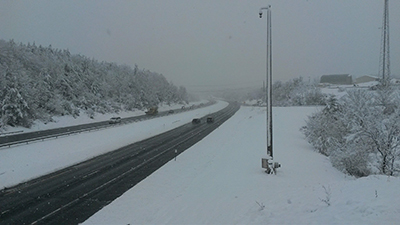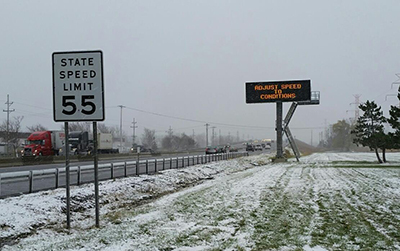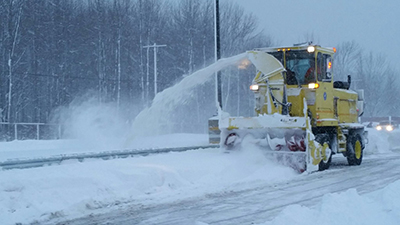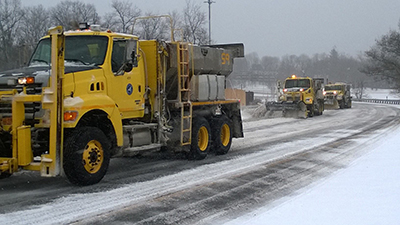Winter Safety
Safe Winter Driving Tips
While the Authority strives to keep the roadway safely driveable at reasonable speeds during periods of winter weather, it is important that our customers take precautions while traveling during the winter months. Below are some tips that will go a long way toward ensuring that you reach your destination safely.
BEFORE YOU DRIVE:
- Get your vehicle tuned up prior to the winter season.
- Make sure windshield wipers, batteries, tires and defrosters are working and in good condition.
- Keep at least half a tank of gasoline in your vehicle at all times.
- Ensure your car has basic winter driving equipment such as a scraper and brush, small shovel, jumper cables, road flares, tow chain and a bag of sand or cat litter for tire traction.
- Keep an emergency kit in your vehicle, including blankets, gloves, hats, food, water, flashlight with batteries, and any needed medication.
- Warm up your vehicle in accordance with operating instructions, and remove all ice and snow from windows and vehicle surfaces (including the roof) before starting your trip.
- Plan your trips carefully, listen to the local weather reports, and the National Weather Service for weather conditions predicted along your travel route.

WHILE DRIVING:
- Always buckle your seat belt and require your passengers do the same.
- Reduce speeds. Remember that the posted speed limit is for ideal travel conditions.
- Allow for extra travel time or consider delaying trips if the weather is inclement.
- Don’t use your hand-held cell phone while driving, as mandated by law.
- Use your headlights, as required by law.
- Be alert and allow more distance between your vehicle and others.
- Use your brakes carefully. Brake early and carefully as it takes more time and distance to stop in adverse conditions.
- Don’t use “cruise control” in wintry conditions.
- Be courteous to other drivers.
- Keep to the right except to pass, using turn signals to alert other drivers of your intentions.

WHILE DRIVING NEAR A SNOWPLOW:
- If you find yourself behind a snowplow, stay behind it until it’s safe to pass. Remember, a snowplow driver has a limited field of vision. Stay back (15 car lengths) until you’re sure it is safe to pass or until the plow pulls off the road.
- Remember that the road in front of the plow is usually in much worse condition than the roadway behind the plow. Plows will typically travel under 35 miles per hour and there is always a temptation to pass them.
- Allow plenty of room when passing a snowplow. Do not cut back into the lane ahead of the truck too quickly since the plow extends several feet ahead of the truck. Some snowplows are equipped with a “wing plow,” extending off the side of the truck.


IN CASE OF EMERGENCY:
- Do not stop within travel lanes. If the vehicle can be driven, motorists should travel to the nearest exit or safe location. If the vehicle is inoperable, motorists should activate four-way flashers, and stay inside the vehicle until authorized personnel arrive to provide assistance.
- Should an emergency occur, please call either 1-800-842-2233 or 911.
- Never walk along the roadway.
Safety & Emergency
For Emergencies
1-800-842-2233
or 911